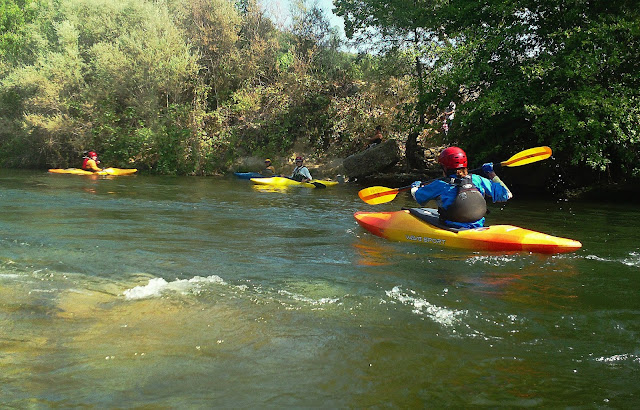The first thing one notices is the sound of rushing water coming off the hills. In some spots, it's a muffled refreshing gurgle while in other places it's a downright roar. Once dry, ditches, gullies, and creeks beds are now hydraulic jets of rushing of water that carry just about anything downstream in a debris-strewn torrent of eroded soil, rock and trees. Area rivers have swelled out of their banks, beat up levees, brimmed over reservoirs and buckled some dam's spillways while bursting over others.
Localized flooding has been commonplace in Northern California this winter, all thanks to a drought-busting parade of storms that are setting the stage of what could be the state's wettest winter on record. Atmospheric rivers, a weather phenomenon of a long and narrow bands of water vapor formed over an ocean, carrying enough moisture to roughly equaled to the average flow of the mouth of the Mississippi River have dumped massive amounts rain and snow across the state once reaching landfall.
“After several years of drought, now we’ve got too much all at once,” Jeremy Hill, a civil engineer with the Department of Water Resources flood operations team told the Los Angeles Times.
Nevertheless, this conveyor belt of storms has created what many call “once-in-a-decade” conditions for many area paddlers on the South Fork American River. Flows estimated as high as 30,000 cubic feet per second compared to a normal pace of anywhere from 1,500 to 3,000 cubic feet per second have fashioned some of the biggest rapids anyone has seen on the river.
"It's been super fun." said Jeff Venturino of Davis, Ca., "It's been nuts, way too much fun. People have been getting on it at huge water. The biggest I have done it was like 10,000 to 12,000 (cfs), but people have been on it as big at 30,000 (cfs). The features are bigger, the holes are bigger. Most of the lines haven't changed much at this (6,000 cfs) flow."
Venturino and his group of paddlers were at local paddling shop The River Store to pick up a few things before taking on the South Fork this past weekend and like all groups on big waters, safety was on their minds.
"We're seven today," said Venturino, "Like I wouldn't do an after work for a two-man lap today, because if somebody swims which is not really an option, but if it happens you need extra people around. It's so continuous you might not be able to grab an eddy so now you've got to get them to the bottom. I have heard a couple of stories of people losing boats or having to hike out. So it's still worth scouting if the flow is anything different from what you have regularly seen before."
Meanwhile, just up the road at Marshall Gold Discovery Park, Melissa DeMarie and her group were dropping off vehicles and loading kayaks in the rain shower while getting ready to shuttle up to Chili Bar put in for one their group member's birthday paddle. Across the way, they could see the South Fork flowing fast and yellow tape blocking off piles of flood wreckage from the weeks before, heaped up along its banks.
"It's been amazing. It's been huge, it's been brown" said DeMarie, "There has been a ton of debris in the river. Things are definitely shifting around a little bit in there. Big trees, big logs and just a lot of other stuff floating down, so you definitely have to keep your head on a swivel and make sure you are looking around and see if there is a tree that is going to come and breach up next to you. But there were definitely days that I have chosen not to paddle like Chili Bar or the Gorge because there is like extra debris in the river. It adds an extra element to it and you gotta be really careful.
Local paddler Demarie with the California Women's Watersport Collective from nearby Cool has been out on the river several times this season and says the high water of the South Fork is a treat for her and other strong confident paddlers, that been offering new looks after enduring years of drought.
"The water on the really high days is super silty and it just reacts differently and there features where there weren't use to be features before, " said DeMarie, "I definitely pick and choose the days. It is really cool to go on the huge days because it hasn't really happened in a really long time and who knows when it's going to happen again."



























